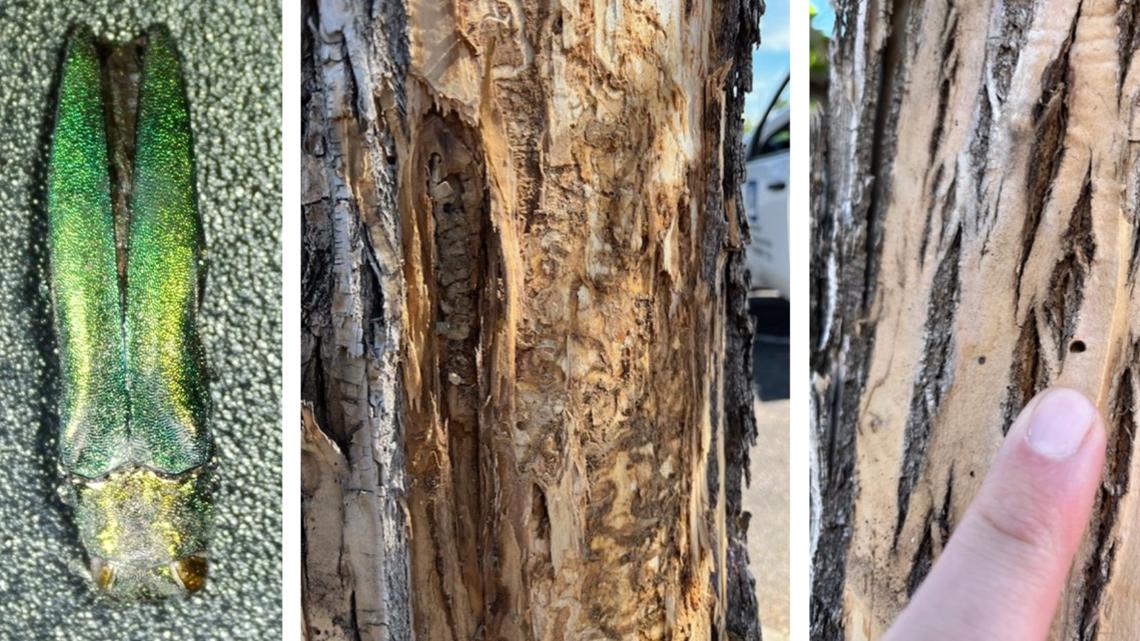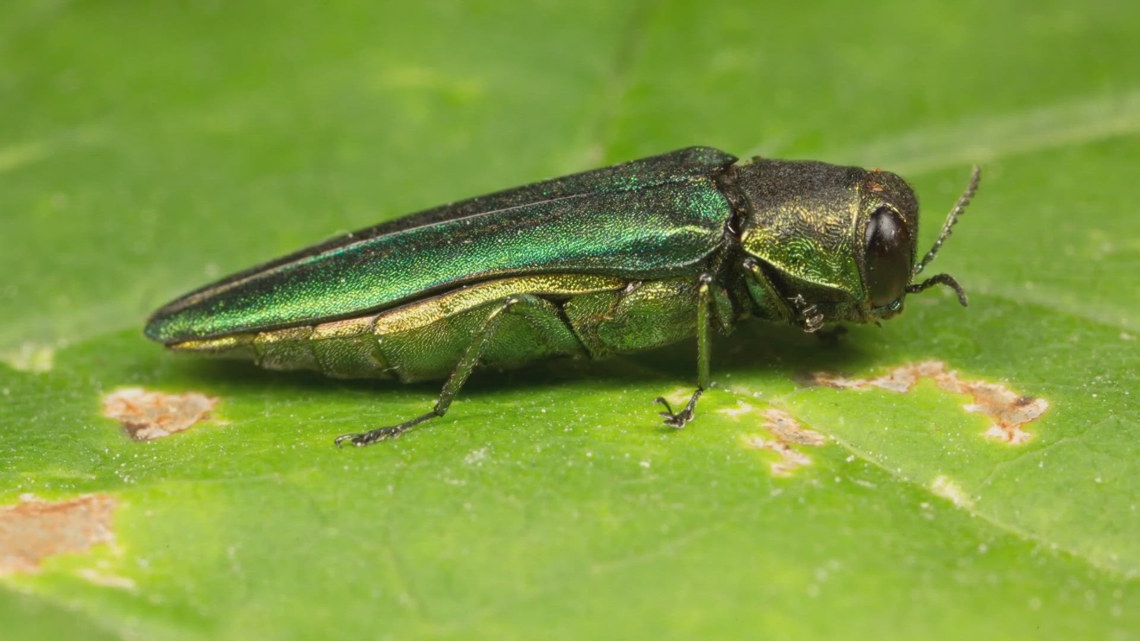LAKEWOOD, Colo. — Emerald ash borers, a type of invasive beetle that infests and destroys Native American species of ash trees, have been found in Lakewood for the first time, the city said on Thursday.
Emerald ash borers were discovered in a small area in central Lakewood, and the findings were later confirmed by Colorado State University Extension in Jefferson County, the city said in a news release. These beetles invade certain species of ash trees, which reportedly make up 15% of all urban trees.
"Emerald ash borer beetles target, and eventually kill, ash tree species of the green and white varieties including the 'autumn purple ash,' a popular white ash variety in Colorado," the city said.
Although this discovery is new for Lakewood, emerald ash borers are not new to Colorado. The first time these insects were spotted in the state was in 2013 in Boulder County. There have since been findings in parts of Adams, Arapahoe, Boulder, Broomfield and Larimer counties.
Lakewood Forestry Supervisor Luke Killoran said that inspecting trees is a good way to identify the invasive insect.
“Look for the distinctive D-shaped exit holes, bark splits and S-shaped tunnels called galleries underneath the bark, gradual canopy thinning and dieback, abnormal shoots of growth, smaller than normal leaves, and heavy woodpecker activity,” Killoran said in the release.


Insecticide treatments are a way to protect ash trees from these beetles, but whether a tree can be treated depends on its size and health.
Trees that are large and of high value warrant early treatment more than those that are younger, unhealthy or poorly located. Trees that are not candidates for pesticide treatments will need to be removed eventually, and people should follow guidelines when disposing of infested wood.
The city reminded residents to make sure that whoever they hire to treat their trees is a certified arborist licensed by the Colorado Department of Agriculture as a commercial pesticide applicator.
Lakewood residents can find resources for tree evaluations and treatments here. More information about emerald ash borers can be found on the CSU Extension website.



